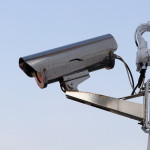Security Cameras: Types, Housing & Features
Shopping for security camera systems may seem like a one-size-fits-all deal, but, unfortunately, it is not. Because there are a plethora of security camera types and surveillance features to be considered, it will take some time to decide. Evaluate your security needs, do some research and weigh your options. To make it easier, we will break down the different types, housing, and common features of security cameras.
Types
The following are the advantages and disadvantages of common security camera types.
- Fixed – As the name suggests, fixed cameras are positioned to capture an image and are always pointing in the intended direction. Because these do no move, they are more reliable than PTZ cameras and can be optimized with different housing and features.
- PTZ Cameras– PTZ stands for Pan, Tilt, and Zoom, thus, these cameras can be remotely positioned (thanks to specially designed motors and gears). These cameras may be set to automatically patrol an area, but they seem to be most effective when manually controlled.
For zoom capabilities, 32X is fairly common, although some higher end cameras may have a greater zoom range. While a greater zoom range is helpful when covering a large area, it is not always necessary.
However, there are some downfalls. Because PTZ cameras can adjust its viewing range, there are chances that they may miss something. Also, zoom decreases the size of the area being covered, and the camera can only be facing one direction at a time.
- 360-Degree Cameras – Also known as virtual PTZ, the 360-degree camera utilizes several high resolution fixed cameras in a single housing (usually dome). The images are then stitched together and can be zoomed in on after recording (zoom capabilities depend on the cameras being used). Because this type of camera can face in all directions, it can be an effective forensic tool.
Unfortunately, these cameras are often oversold as a universal solution, despite the fact that very few rooms allow for an unobstructed view in all directions. In applications where this camera is necessary, it often does wonderfully. However, a standard fixed camera can be paired with a lens to give it a 120-degree to 140-degree view. Also, many rooms are better monitored with cameras in corners (which only require a 90-degree field of view).
Housing
Once you have chosen the camera type, housing will come into play.
- Outdoor – Because of changing environmental elements, outdoor camera housing will be more weather resistant and include heaters and blowers.
- Dome – These are designed to obscure the direction of the camera to outsiders. This is often the best deterrent, making it a high priority and often a default selection. Most people assume dome cameras cover the entire area, making a fixed dome camera covering a door entrance more effective.
- Bullet – These are named for their sleek, cylindrical shape, often times resembling a bullet. This housing clearly shows the direction of the lens and generally provides a better picture. The front of the housing is close to the camera lens, decreasing reflections and making it easier to maintain. These act as deterrents as well, but are not as effective as ambiguous housing.
- Discreet – These completely disguise the camera as something else, such as a smoke detector or motion sensor, or as nothing at all, with pinhole or flush mount lenses installed in a wall or ceiling. Because they are hidden, they are not designed to be deterrents. These are often favored by architects looking to achieve a certain aesthetic.
All types of housing can be made to be vandal resistant, which is a step up from weather resistant. These types of housings are most commonly dome shaped and are designed to withstand unfriendly environments while still providing a usable image.
Features
The selection of features for your security cameras will depend on the application and your individual needs.
- Resolution – Resolution is measured in megapixels (millions of pixels) and is a major factor in picture and video quality. The higher the resolution, the more space required to store the images and processing power to manipulate it.
To demonstrate the differences in resolution, an old analog camera is about ¼ megapixel, an HDTV screen is just over 2 megapixels, and the highest resolution projected image in movie theaters (4K) is 8.8 megapixels.
While higher resolution cameras may be appealing, these do not respond as well as lower resolution cameras in low light situations. Thus, it is possible to buy more resolution than you need, unnecessarily increasing storage costs while decreasing performance.
- Low Light – Cameras with day/night capabilities are able to automatically adjust modes in various lighting situations. With advanced technologies, these cameras are able to produce usable images in near total darkness.
There are also cameras with infrared illuminators, which provide their own light source to obtain better images in low light settings. As mentioned, in order to improve low light performance, you will need to sacrifice some resolution.
- Lens Features – Varifocal lenses allow the installer to manually adjust the image magnification when installing the camera. However, many fixed cameras now come with remote zoom and focus (allowing the user to adjust the camera without physically going to the camera site), as well as auto-focus.
- Advanced Options – Other options to consider include wireless signal transition, ultra-high resolution, thermal imaging, explosion proof housings and more.
No matter what the application, there’s likely a perfect security solution thanks to the comprehensive options available. And while the selection process may seem overwhelming, we are here to help. Feel free to browse our CCTV surveillance systems online at SecurityCamExpert.com or call 888-203-6294 to speak with a representative.
You can also connect with us on Facebook, Google+, Twitter, LinkedIn and Pinterest!
